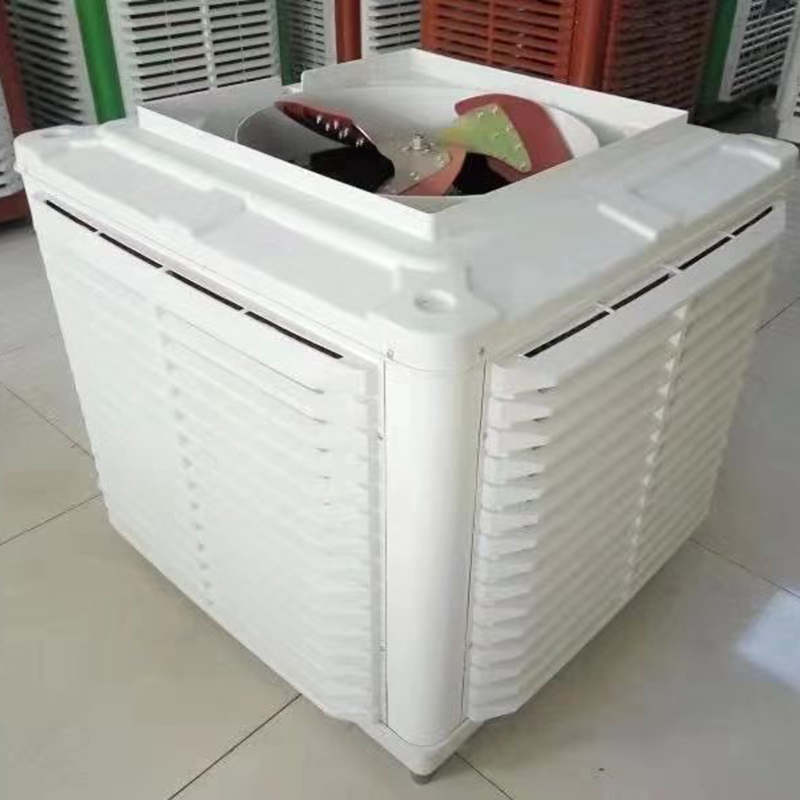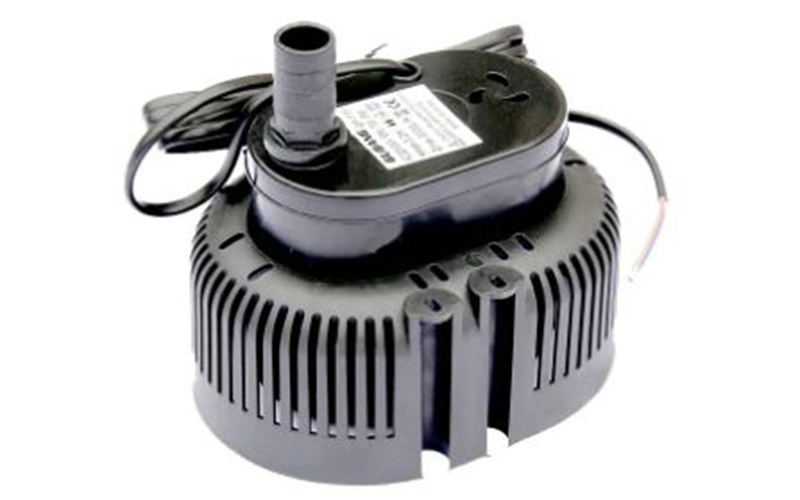June 27, 2023 Equipment, Top Headlines Leave a comment
Recently, it has been very hot outside with air temperatures approaching 90 degrees. Hot weather raises inevitable concerns about heat stress and disease prevalence of animals, especially poultry birds in large-enclosed spaces. The ongoing climate change and variability are expected to exacerbate the heat stress problems and infectious diseases in poultry production, which have caused significant losses in poultry industries. The recent outbreaks of Highly Pathogenic Avian Influenza (HPAI) have resulted in 57 million and 58.8 million infected birds, in 2014-2015 and 2022-present respectively. The heat stress problems in poultry production have resulted in an estimated total annual loss of $180 million. These losses present significant challenges to the sustainability of the poultry industry. In addition to vaccination and medication treatment options, engineering technologies and management strategies are needed to control the indoor environment to proactively abate heat stress and disease transmission in poultry facilities. This article summarizes indoor environment management strategies and the best available technologies to abate heat stress and infectious diseases. Chimney Roof Exhaust Fan

The thermal environment and air quality inside poultry houses directly affect bird comfort and health. Indoor air temperatures, air speed, and humidity should be maintained at animals’ thermal comfort zoon to ensure animals have relatively stable body temperatures for good animal welfare, health, and production performance. Animal heat stress occurs when heat gain is greater than heat loss and they cannot maintain stable body temperatures. Heat stress can result in low feed intake, poor performance, and even the morality of animals. Further, OSU research confirmed animals exposed to wide variations in daily high temperatures were at greater risk of high Salmonella prevalence. In addition, high levels of ammonia and dust have been known to enhance the incidence of respiratory diseases in poultry birds. Ammonia can cause excessive mucus production as well as cilia loss and dysfunction, which can result in a reduced clearance of respiratory pathogens like E. coli and influenza viruses. Moreover, dust is known to carry pathogens, which can enhance the transmission of infectious diseases.
Ventilation management for thermal environment control
Ventilation of animal buildings is a fundamental means to cool farm animals in mild and hot seasons by introducing cool, dry, and fresh outdoor air into the animal buildings and exhausting hot, humid, and stale air out of the buildings. In summer, a maximum ventilation rate is needed to remove excessive heat and moisture out of the animal building. Producers should make sure enough ventilation is maintained by checking the proper operation of the ventilation equipment, and fan operation status, estimating the total ventilation rate against ventilation requirement, adjusting air inlets to maintain sufficient air intake and airspeed, and closing doors and windows to prevent air short-circuiting. However, one fact we should pay attention to is that the ventilation process can only reduce indoor air temperature to three degrees above outdoor air temperature. When outdoor temperatures are close to the indoor animal body temperatures, ventilation may increase the animal heat stress.
Furthermore, the widely used tunnel ventilation system, with which fresh air enters a layer house from one end of the house and is exhausted by fans located on the other end of the house, has an inherent drawback of large gradients of air temperature and relative humidity along the airflow pathways. With tunnel ventilation, the air is cool and dry near the air inlets but hot and moist near the air outlets. This non-uniform thermal condition puts birds near outlets at higher risk. Special attention to and monitoring of the thermal conditions near exhaust fans are highly recommended, especially in long poultry buildings with tunnel ventilation systems.
To reduce economic losses due to heat stress and disease outbreaks, OSU researchers developed an upward airflow displacement ventilation (UADV) system for commercial manure-belt layer houses. With this new system design, fresh air is uniformly supplied from air ducts located beneath the cages; it directly reaches hens and is heated by hens; the heated air will then escape the cages and flow upward in the aisles due to the buoyancy effect and suction caused by exhaust fans installed on the roof; the air is finally exhausted through exhaust fans. This ventilation design allows for the shortest pathways of contaminated air and provides efficient removal of heat, moisture, air pollutants, and viruses compared to existing tunnel and cross-ventilation systems. The performance of the new UADV system was preliminarily simulated using a Computational Fluid Dynamics (CFD) model. It was found that it could provide more uniform thermal conditions with less heat stress compared to the existing tunnel ventilation; heat stress at a danger level could be reduced from 8.7% to 0.7% in summer; and disease transmission could be reduced from 29.8% to 2.7% in summer.
The last strategy is to use cooling wisely. While there are several methods of cooling, wet-pad evaporative cooling and tunnel ventilation systems are typically used in some poultry buildings to supply cool air to the animals. The effectiveness of evaporating cooling relies on air relative humidity, air temperature, and airspeed passing the wetted surface. In hot and humid weather, the evaporative cooling method is not effective. Air conditioning systems are reported to be used in some of the dairy facilities in Florida. Considering the trend of climate change of global warming and more precipitation, we may reconsider the economic feasibility and applications of alternative cooling options in poultry facilities.
Needs for dust control in poultry facilities
Dust mechanical irritates the respiratory tracts of birds. The mechanical irritation of dust to the respiratory epithelium, its interference with mucous production, and its damage to the cilia lead to an increased susceptibility to infection by aerosolized microbes, such as E. coli, which might not otherwise have an impact on the bird’s health. In addition, pathogens can attach to dust particles, which increase the transmission of diseases. For example, the spread of avian influenza made us think that avian influenza could be airborne and transmitted through the dust laden ventilation air of poultry facilities. Control of dust particles in poultry production become a necessity to protect bird health. OSU researchers has conducted research to optimize electrostatic precipitation-based technologies to control dust in commercial poultry facilities with more than 90% dust removal efficiencies. More practical applications of these technologies for difference type of poultry facilities are needed.
Needs for pathogen control systems in poultry facilities
More frequent outbreaks of HPAI and other airborne diseases demand new pathogen control methods be developed to better protect the economic interests of poultry facilities and the health of birds. It is urgently needed to control the important airborne transmission path of the HPAI viruses in poultry facilities. An interesting side effect of electrostatic precipitation dust control technologies is their varied capacities for pathogen control. We are seeking funding to support research on further optimizing the electrostatic precipitation technologies for HPAI virus deactivation, especially at the air inlets of the poultry building to protect the facilities from virus infection.
In summary, hot weather conditions post concerns/threats about heat stress and disease prevalence among birds in large-enclosed poultry facilities. Ventilation is the fundamental method to control thermal conditions in poultry facilities and needs to be closely managed. Cooling may become a necessity as climate change causes more often and intense heat waves. Dust control in poultry facilities is needed to control disease transmission and protect bird health. Effective control of airborne transmission of HPAI is urgently needed. OSU is seeking research support to optimize electrostatic precipitation technologies for airborne HPAI pathogen control.
Lingying Zhao, Professor and Extension Agricultural Engineer, can be reached at zhao.119@osu.edu. This column is provided by the OSU Department of Food, Agricultural, and Biological Engineering.
Your email address will not be published. Required fields are marked *
Save my name, email, and website in this browser for the next time I comment.
https://ohioagnet.com/ftp/Web%20Weather.mp3
December 11, 2023 — Today we see clouds and some sun, more clouds north, more sun south. Then tomorrow through the end of the week we can expect partly to mostly sunny skies…More from Chief Meteorologist Ryan Martin

Evaporative Cooling Pad December 11, 2023 — Today we see clouds and some sun, more clouds north, more sun south. Then tomorrow through the end of the week we can expect partly to mostly sunny skies…